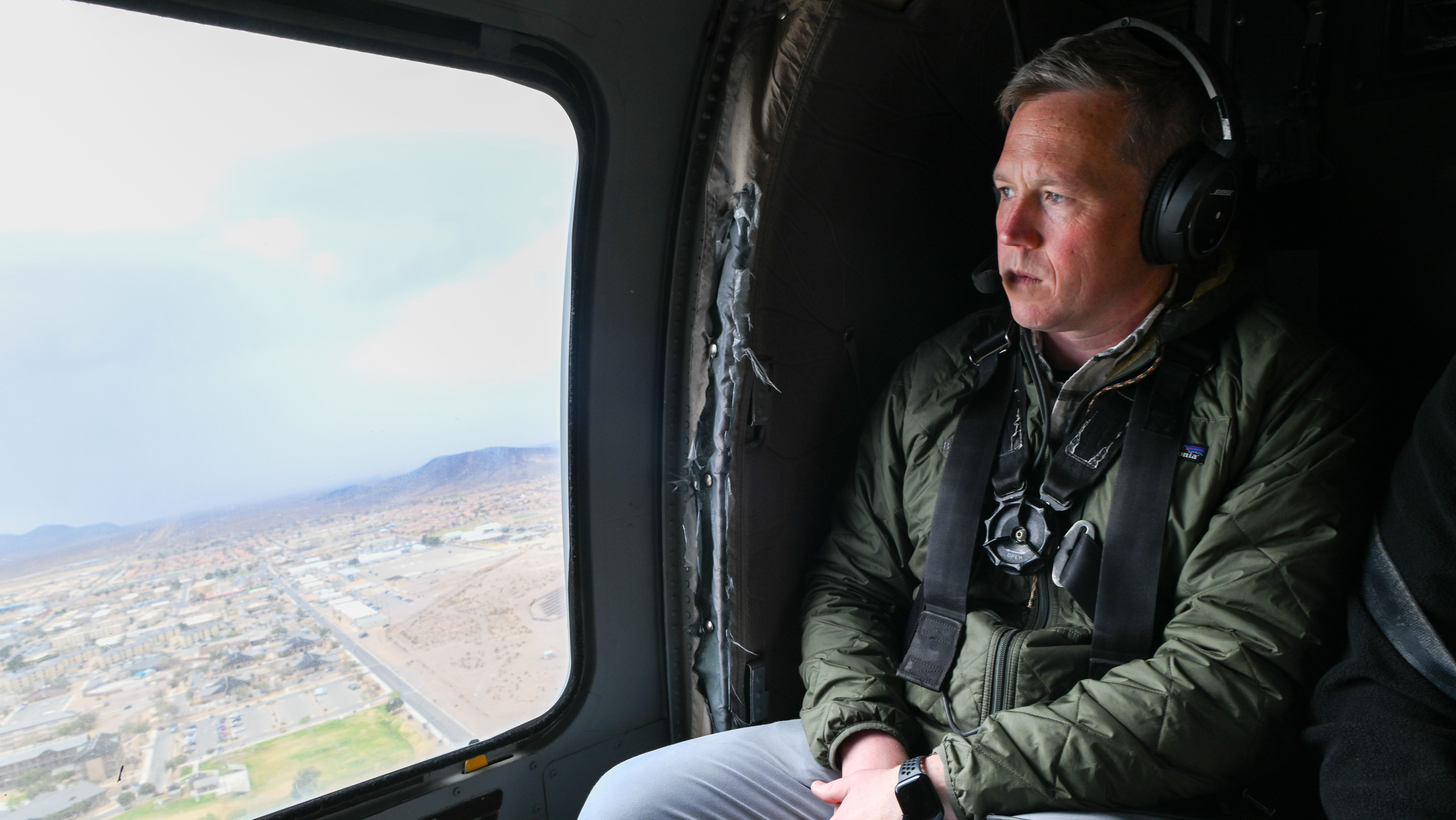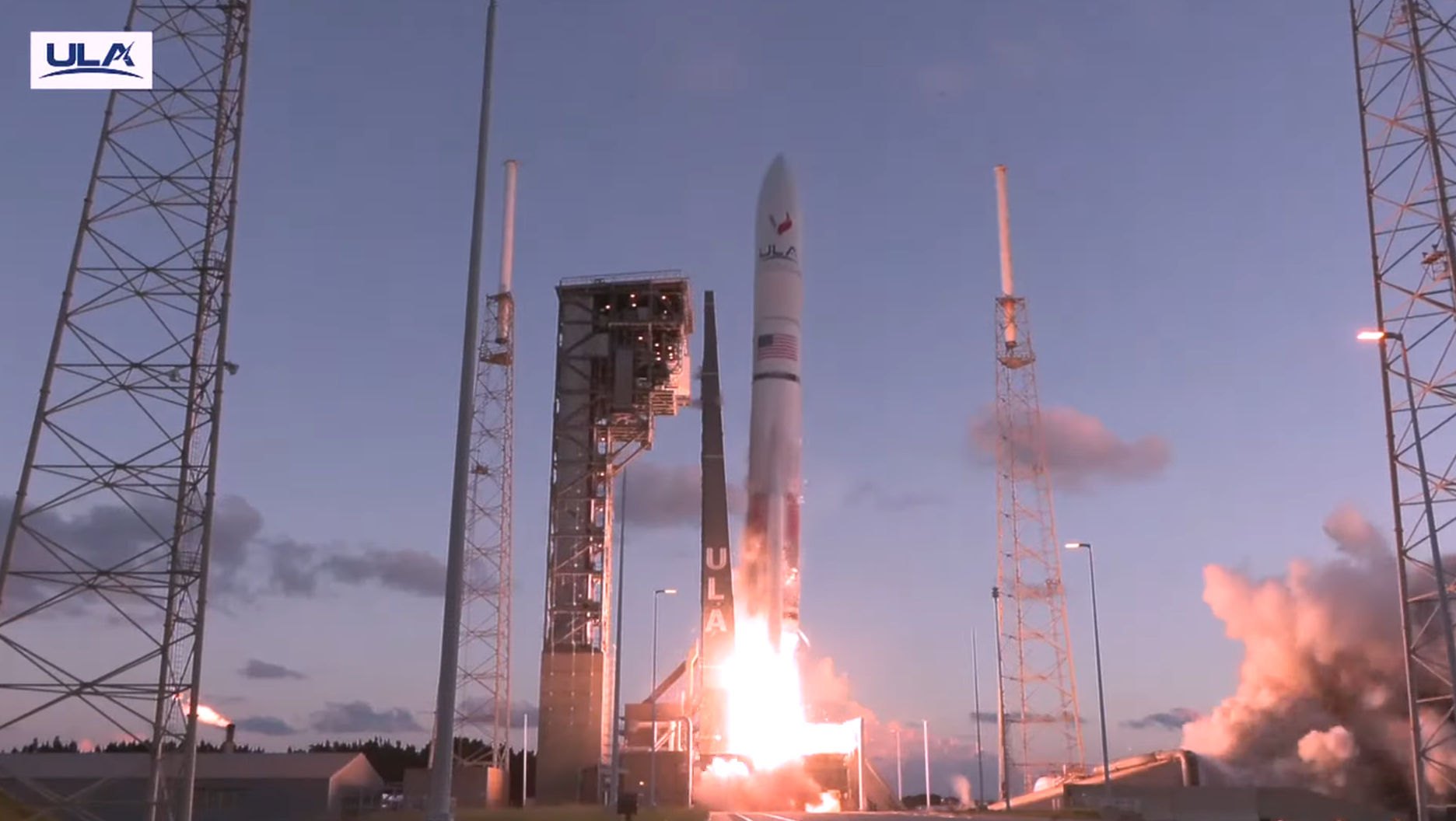As Army leaders reconsider needs and rumors swirl, industry braces for potential ground vehicle cuts
“[We’re] trying to figure out what’s going to happen,” an industry official told Breaking Defense. “I joke about the crystal ball, but it’s kind of anybody’s guess right now about what could come out.”


A live fire demonstration of the Army’s M10 Booker at Aberdeen Proving Ground, in Aberdeen, Md., April 18, 2024. (US Army/Christopher Kaufmann)
WASHINGTON — Out in California’s Mojave Desert, Army Chief of Staff Gen. Randy Geroge had a clear message for industry: A technology shakeup is afoot for the service that could rock large-scale acquisition programs, including ground combat vehicles.
“I’m tied to overall capability,” the four-star general told Breaking Defense during a recent interview at Ft. Irwin, Calif. “How we do that is probably going to change … [and] with what equipment.”
“Look at how much has changed in technology just in the last couple years, it would make sense that we probably wouldn’t buy the same things that we’ve been buying for a long time,” George added.
George’s comments come amid swirling industry speculation that the Army could make significant cuts to its ground combat vehicle portfolio. And while the service hasn’t committed to any major cuts yet and there’s rampant uncertainty with regard to the service’s budget, defense contractors are already bracing for bad news, according to seven industry sources at both large primes and subcontractors.
“Cuts are all rumor until they are not,” one industry official said.
A second industry source said they’re “trying to figure out what’s going to happen. I joke about the crystal ball, but it’s kind of anybody’s guess right now about what could come out.”
“Literally everything is on the table,” added the source, who like others was granted anonymity to speak frankly about the uncertain situation.
To understand much of the concern, it’s necessary to go back to 2023 when The Marathon Initiative, a non-profit focused on national security topics, published a report [PDF] called “Resourcing the Strategy of Denial: Optimizing the Defense Budget in Three Alternative Futures,” which proposed drastic changes in acquisition for all the services.
When it comes to the Army, the report argued for paring back formations and weapons buys, including terminating the Armored Multi-Purpose Vehicle (AMPV), Self-Propelled Howitzer Paladin Integrated Management (PIM) program, and the ongoing Bradley replacement competition, while also reducing the planned buys for upgraded M1 Abrams tanks, the number of Strykers and aircraft upgrades including the AH-64 Apache and UH-60 Black Hawk.
While that document is almost two years old and not a government publication, in recent months it has gained traction in defense industry circles since its author, Austin Dahmer, is now inside the Pentagon performing the duties of deputy undersecretary of defense for policy, and a co-founder of the initiative, Elbridge Colby, has taken the DoD’s top policy job.
Specifically, a chart of possible cuts drawn from the report has made the rounds, as has additional speculation that projects like the M10 Booker and the embattled Robotic Combat Vehicles program could be in danger, according to all of the industry sources.
When asked about The Marathon Initiative report and the widespread rumors, George said he had read the Marathon document but steered clear of detailing any agreements or diverging views.
“The big thing that I kind of took away from this is one, [I’ve] got to make sure that we know what the Army can do, and I’m very confident with what the Army is going to do for our country,” he said. “[That’s] going to be with digitally connected, mobile, dispersed soldiers that [have a] very low signature, that can operate and provide long-range fires, that can … seize and hold ground.”
Newly minted Army Secretary Daniel Driscoll will ultimately place his name behind any service force structure changes and weapons cuts. And as of today, he had not signed off on any massive overhaul, an Army official told Breaking Defense.
But he is closely studying ways to “free up resources” from older programs and “recycle” them into “things that will help us win the next war” as well as George’s “transformation in contact” push.

The Secretary of the Army Dan Driscoll flies in a UH-60 Blackhawk at Fort Irwin on March 13. (US Army/ Sgt. 1st Class Nicole Mejia)
To help make that determination, the service is using a reversal of the Army Requirement Oversight Council (AROC) process, dubbed CORA, to shed requirements in a fast but “judicious manner” and make sure that “it’s not a knee-jerk reaction,” the Army official added.
Army Futures Command head Gen. James Rainey is helping sort through some those requirement questions and has used experiments like this year’s Project Convergence Capstone 5 (PCC5) event to help filter insights back up to Driscoll and George.
“Chief hates a piece of equipment we have. He’s like, ‘I want to kill it.’ And I said, ‘Don’t worry, it just committed suicide at PCC5. … [It went] green to red like a frog in a blender,’” Rainey recently recounted on stage in Huntsville, Ala.
Industry is now bracing to see what’s preserved and what’s tossed into what could be the Army’s blender of death.
‘Industry Needs To Just Hold On’
There are a host of moving pieces in play that could shape Army leaders’ decisions, from the state of tech to the ongoing look at how the service is organized. But one of the primary drivers of that conversation has been around budget constraints.
“We face some hard decisions about how much legacy and enduring capability we continue to pay for it at the expense of transformation,” Rainey told reporters last month. “I don’t want to speak for the chief or secretary, but they see that pretty clearly, that we absolutely have fund transformation.”
Up until earlier this month, the assumption had been that the Defense Department would be operating with a relatively flat budget, with the Army aligned to taking upwards of a 10 percent hit, retired Army Maj. Gen. John Ferrari, a senior nonresident fellow at AEI, told Breaking Defense. But then President Donald Trump made a surprise announcement this month: The US appears poised for its first $1 trillion defense budget request.
“I think nobody, including the Army, right now knows what might be coming in the next 30 days,” Ferrari said. “Every time you think you’ve got a firm grasp on the funding … something else changes.”
If there is a $50 billion hike in discretionary spending to the fiscal 2026 request, questions start to emerge about whether the Army cut will remain, whether new tech startups will be the victors of that funding and whether the US will maintain a troop presence in Europe, Ferrari added.
“Industry needs to just hold on and wait for the next 90 days for this all to play out … [because] it’s changing hourly,” the retired two-star general said. “I wouldn’t be placing any strategic bets on the game board for the next six months. I wouldn’t be planning to close or open a plant. And even if the defense budget goes to the hill with a line closed, Congress [could reverse it].”
The industry sources from big primes to subcontractors inside the ground vehicle realm say they are doing just that, holding tight and bracing for what may be coming.
A third industry source said that it’s challenging to make any business case decisions until the FY26 budget request is released.
For example, the source said it seems like speculation changes “day-by- day” to include possible cuts to both existing and new and developmental ground vehicle programs.
“At the same time, [we’re] moving forward in terms of putting the resources in and working on the key programs and the milestones for these competitive programs,” the official added. “We’re not stopping our efforts: We’re moving along like those things that are going to get funded.”
The second source cautioned Army leaders against narrowly looking at the ground vehicle space through two lenses — legacy and modernization — and then funneling funds towards future combat vehicles.
That’s because they said many of the vehicles rolling off the production line today have been significantly upgraded over time (i.e., Abrams evolving iterations or the Self-Propelled Howitzer PIM program).
Also, if the Army decides to cut a hot production line at somewhere like General Dynamics or BAE Systems, it will have second and third order effects for the entire supply chain, Ferrari and industry sources explained.
“The notion that I’ll shut this down and in a couple of years I’ll build a new vehicle, and we’ll start a new production line, that doesn’t work,” Ferrari warned. “You will essentially be irreparably harming not just the first-tier industrial base, but the supply chain.”









































































































































































